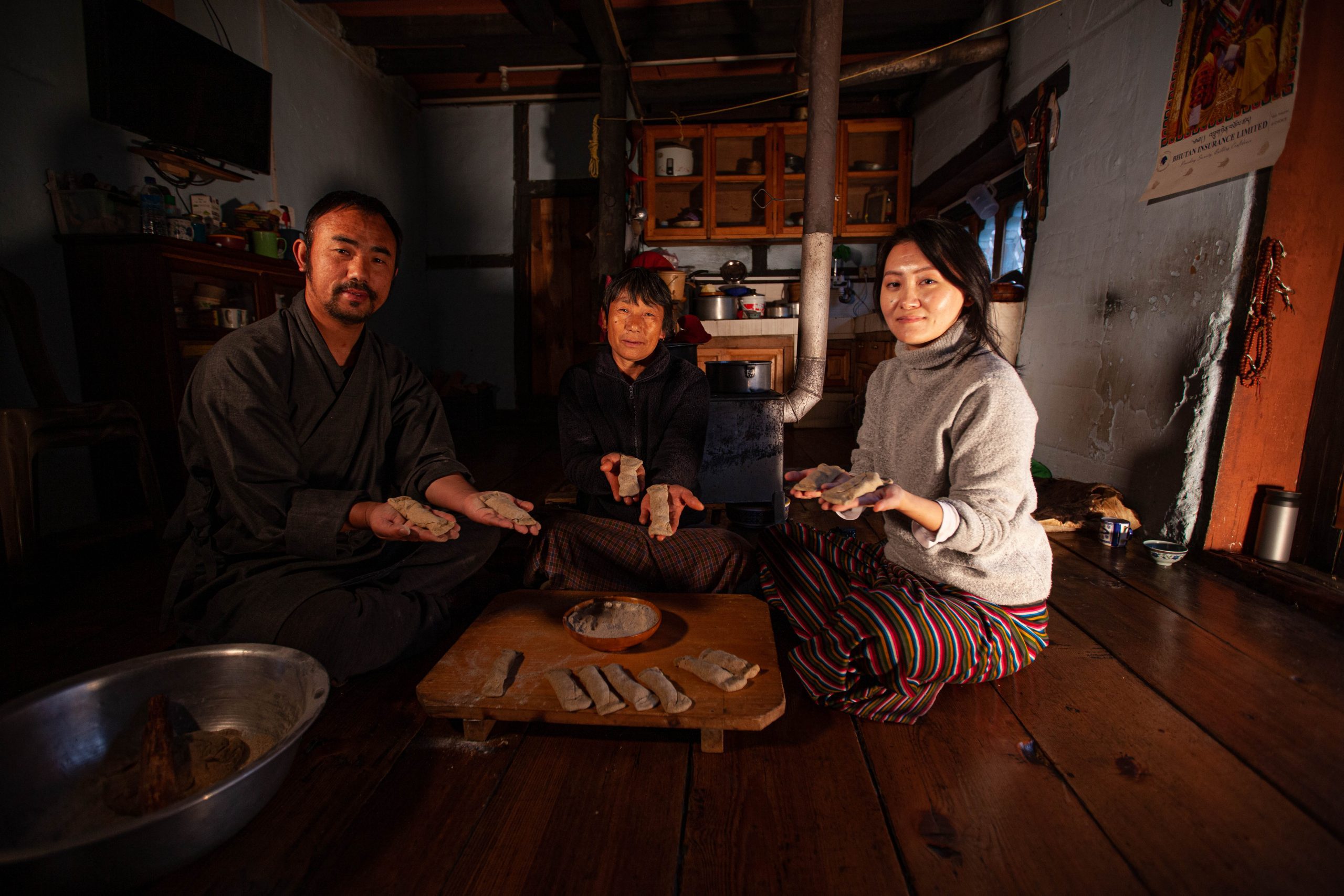
I want to take you on a journey that made me rethink traditional food. The journey starts from Haa but I hope it’ll gradually move to other corners of the country as well. This is my special getaway to Haa to rediscover the culture and history of home cooked food from Haa. Look forward to rare recipes I had never heard of.
Choden Homestay, Dumchhoe, Haa
It all started with a craving – for something different. I’ve always loved travelling for food. Most of my food experiences were something that I would run into accidentally while travelling for something else. My short getaway to Haa to a cozy (rather large) homestay in Dangchu was planned all for the food. The family that invited me there promised to share recipes that even most Bhutanese may have never heard of. So off I went and boy was I surprised!
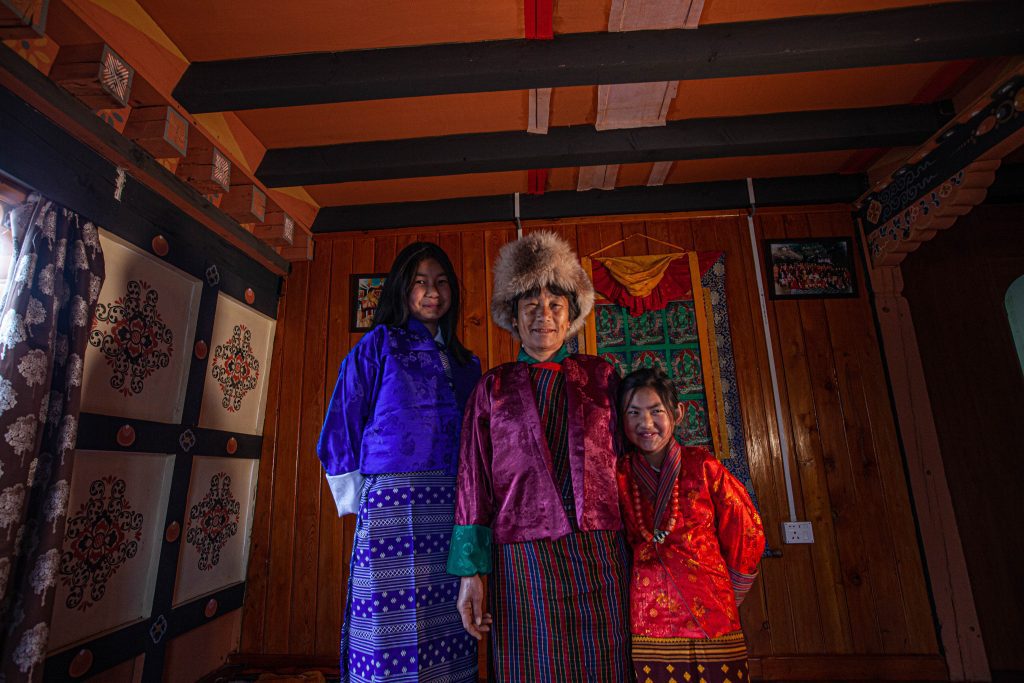
If you find yourself hosted by a family in Haa, you’ll notice you’ll be served with a lot of tea. The tea would be accompanied by Phchhii (wheat flour). Whether it’s for breakfast or a lazy afternoon, or an evening huddled near the Bukhari – Haaps love there Oja with Phchhi. The story of this tradition is best illustrated through Jojo Phub’s conversation with his granddaughter.
Jojo: “When I travelled towards the Indian towns near Samtse for trade, a handful of this flour would be my snack as I crossed mountains.”
Little Tenzin: “You walked all the way? What did you bring back?”
Jojo: “Rice and steel utensils and pots. This phchii with suja was always my favourite. And you don’t take this with a spoon. You use your finger. And the grease you get on your hands from the butter, you apply it as a cream for your face. That’s how our skin doesn’t crack in the cold winters.”
I couldn’t help but laugh at the kids’ bewildered faces at the idea of using suja butter as moisturizer.
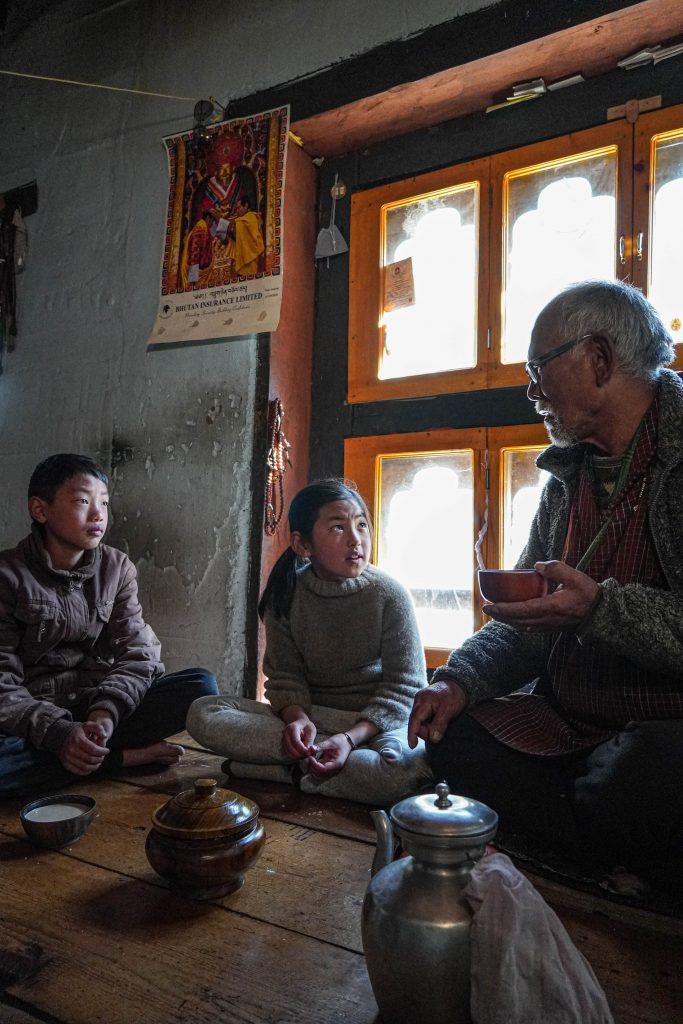
Khundue Buckwheat Rolls
What is the one famous food that comes to mind when you think about Haa? Hoentey right? Well, did you know that there’s a different version of Hoentey that most homes here don’t make any more? Aum Choden’s younger son Gembo (an aspiring chef and master at homecooked traditional meals) taught me a fascinating rendition of the famous Haap buckwheat dumplings.
This is called Khundue – made from the same ingredients as an hoentey but wrapped like a roll. I asked the family what it is named after. “During snowfall children play with the snow by rolling it,” says Aum Choden. “The way we roll and wrap the Khundue is similar.” People who love the traditional dumpling would love the Khundue. You get a lot more filling of the turnip and cheese. The rolls are steamed in a pot and then pan-fried for a crispy skin. I love the hoenty so naturally I loved this version of it as well. It was indeed quite the revelation.
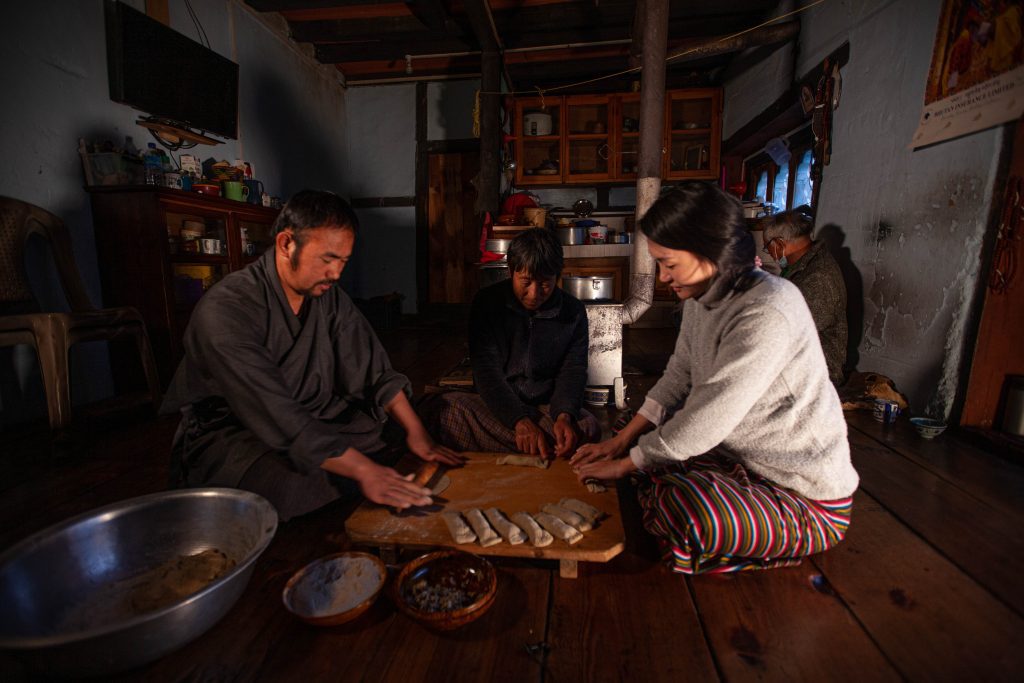
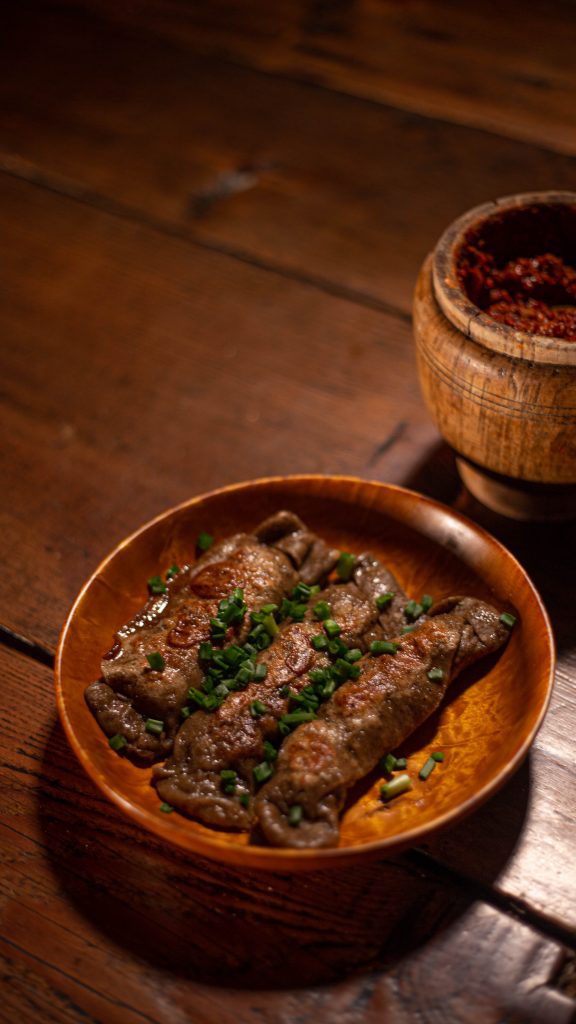
Food in Haa
The cold regions of the north are not conducive to growing vegetables, or much of anything at all. In the old days even a handful of flour was food – mixed with tea that had no sugar.
Food was eaten for survival – not for its taste, texture or for the merriment in joyful opulence. The people learned to make the most of what they had. They traded the rest for little luxuries like sugar, salt, rice and chilies beyond the cold valley. Today we find ourselves so consumed by the overpowering tastes of processed food in packages that we whine at anything that don’t deliver those flavours.
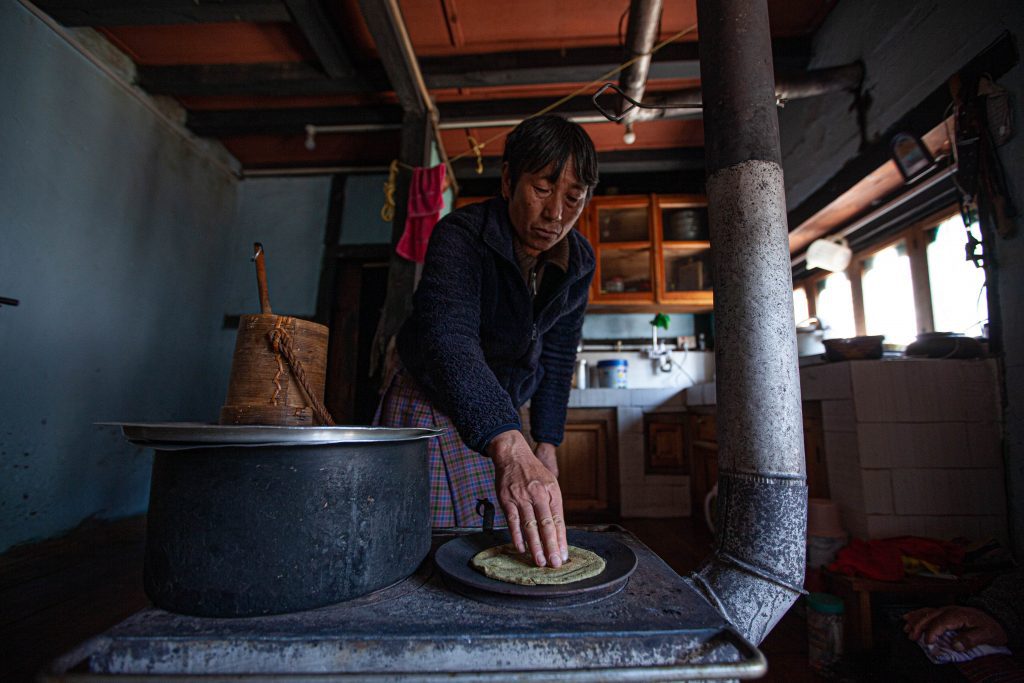
In the evening, I requested Ama Choden for a taste of the past in the form of stale buckwheat flat bread and turnip stews. I ended up connecting to its familial taste comforting my soul on a cold winter night.
Traditional Alcohol with a Twist
You would think that someone from eastern Bhutan would have a higher tolerance of alchohol. But I’m an embarrassing light weight sharchop. I cannot drink.
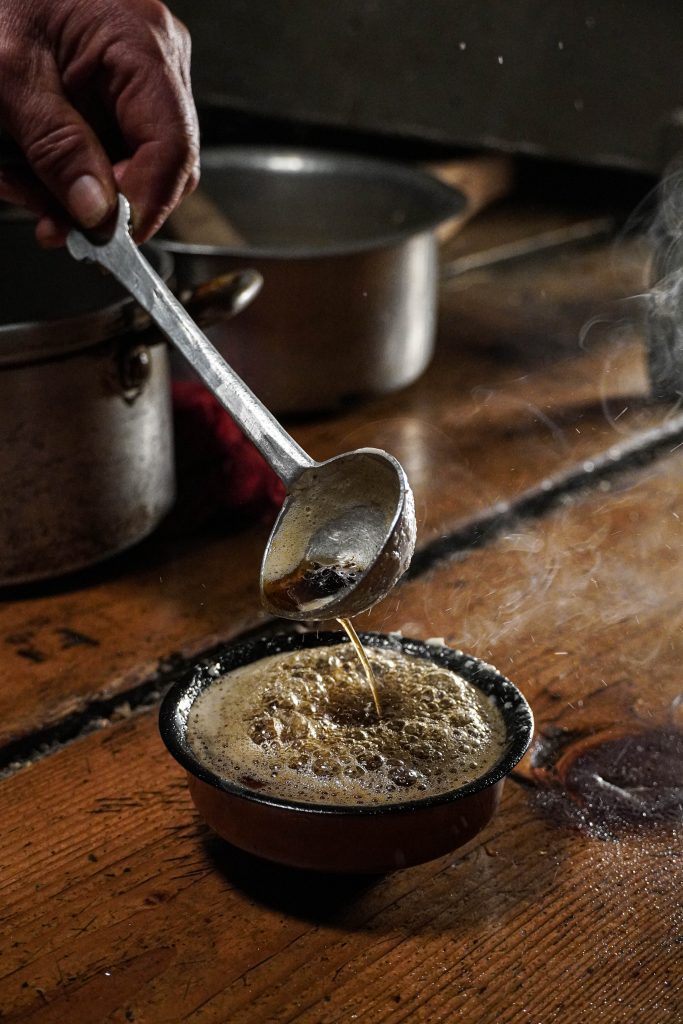
So as I scramble to find words to describe this “alcoholic beverage”, please note that it was quite strong. Oh yes this is the traditional fermented rice alcohol called Chhangkoe…with a twist.
Usually served to visiting guests right after the birth of a child, Aum Choden says this one is given to the new mother to regain her strength. Hence the shocking layer of melted butter. You’re probably apalled at the idea of serving alcohol to breastfeeding mothers. That’s how it was in the old days in Bhutan. And quite frankly, I think the tall healthy Haap children turned out just fine.
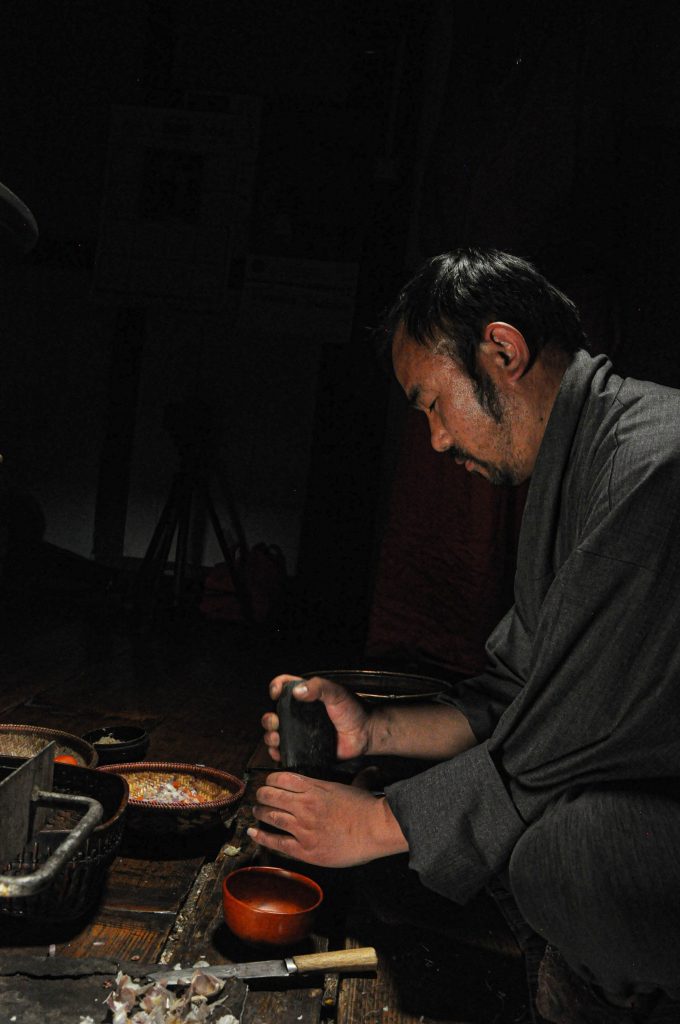
Introducing, two more rare recipes from Haa that sound more like long lost brothers rather than food. Meet Tshethu & Khethu. Why did I say they sound like they’re related? It’s because they’re both eaten during different seasons. Tshethu is a hot stew that is eaten during the cold season (tsha to to bey). And Khetu is meant to be eaten cold during warmer seasons (Khem bey)
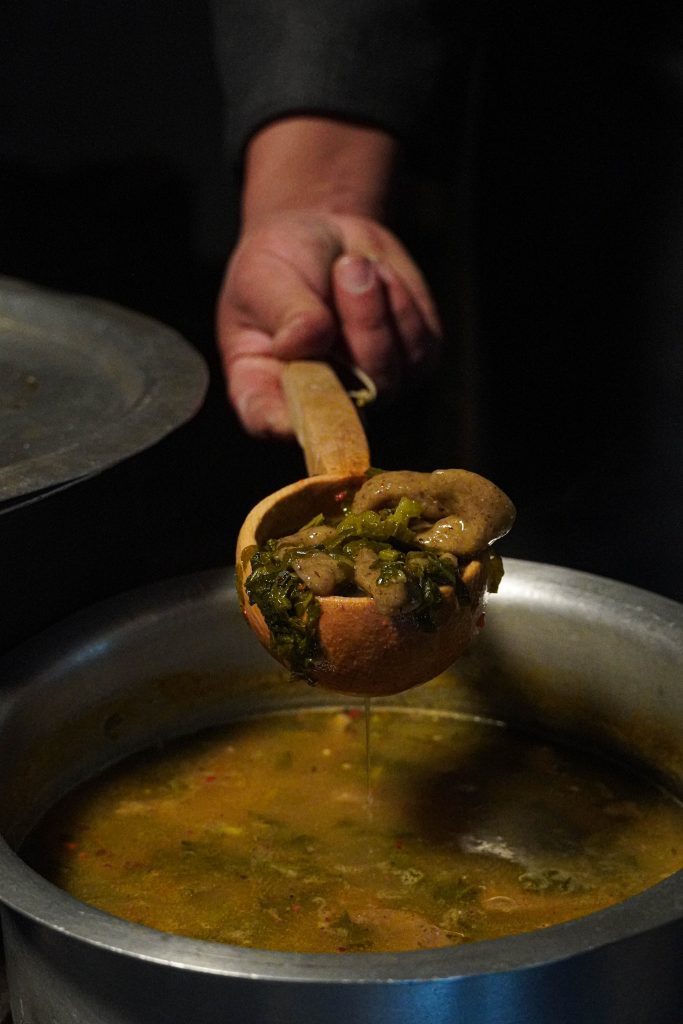
Tshethu Hot Stew
Tsethu is a hot thukpa basically but a bit different. Gembo makes short thick noodles from buckwheat dough. Painstakingly, he rolls each with his bare hands until he gets a bowl full of worm-like noodle dough. After it’s boiled and strained, he pours them in a pot of boiling vegetable stew . You can add spinach or turnip.
Sluuuuuurp. What’s it like? Not very different from a thukpa but it’s much healthier than a bathup made from flour. The soup feels cleaner and light on the palette. Unlike the gooey flour dough the dense buckwheat noodles can be an acquired taste for some. But it is delicious!
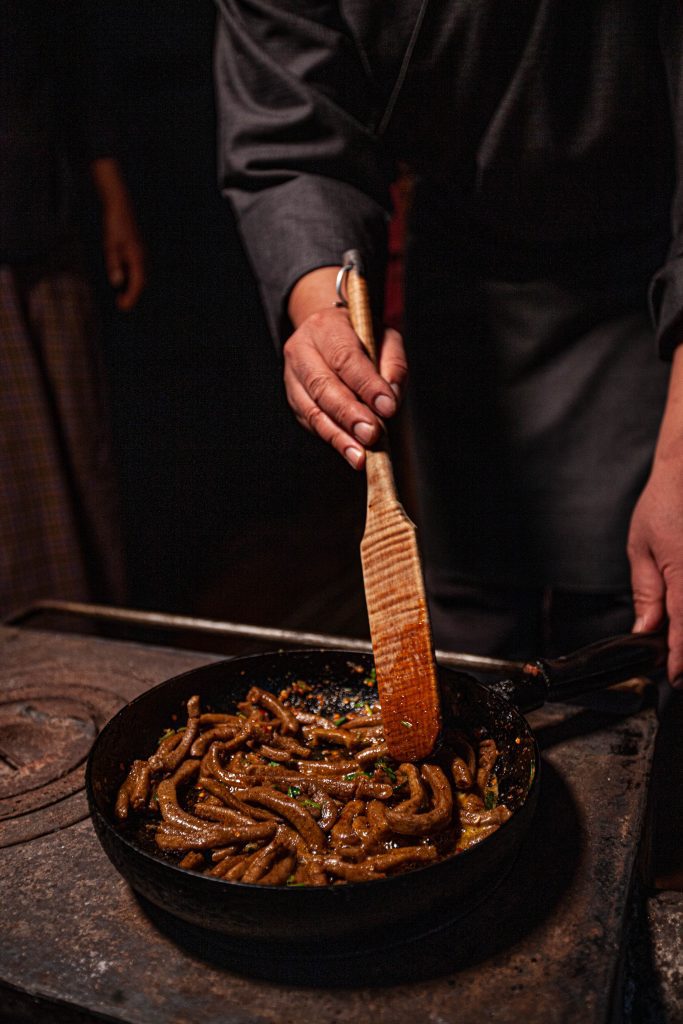
Khethu Noodles
Gembo places the long thick buckwheat handmade noodles into spiral rolls and steams them. “Khethu is very similar to the Bumtap Puta. But it’s thicker and the noodles are rolled by hand,” he says as he removes the steamed noodles. The noodles are then pan fried in butter, thingye (pepper) ebchhi (chili powder) onions. A sprinkle of flour is added into the mix. “It can be eaten cold,” mentions Gembo – hence its name.
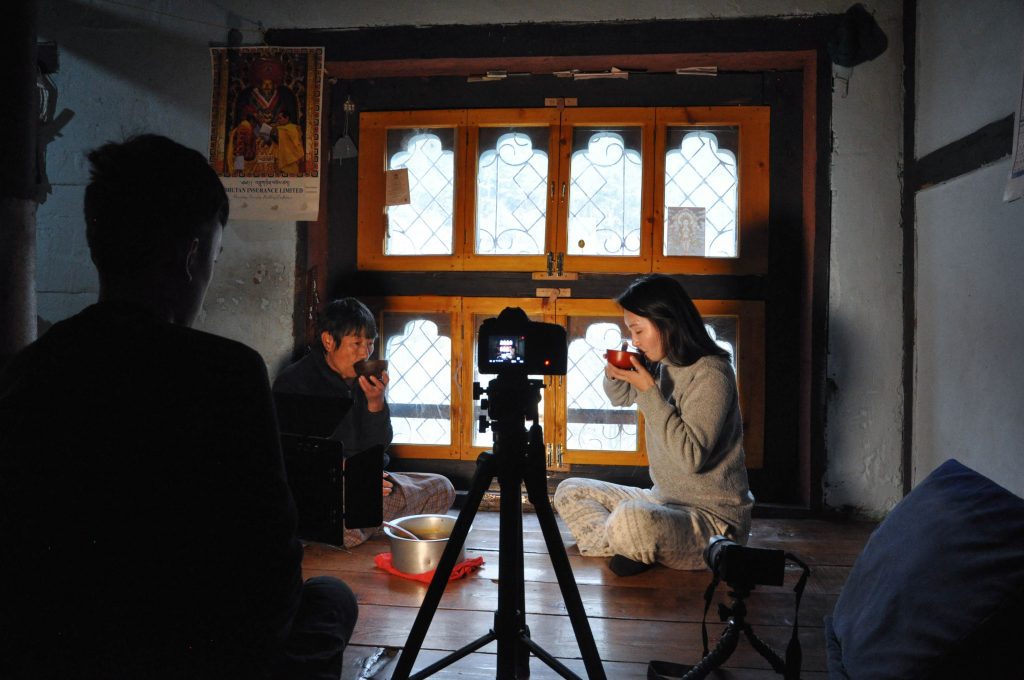
My time savoring the traditional food in Haa came to an end with a special dessert – chhugo Magi.
Made from hard cheese, sugar and lots and lots of butter, this one might be a bit too rich for some. But ti is a must try. Jojo Phub taught me how to have the remaining liquid butter sitting on the base of my phob. I thought the lump of dough you make with the khapchi was called Tsampa but Haaps call it Majey.
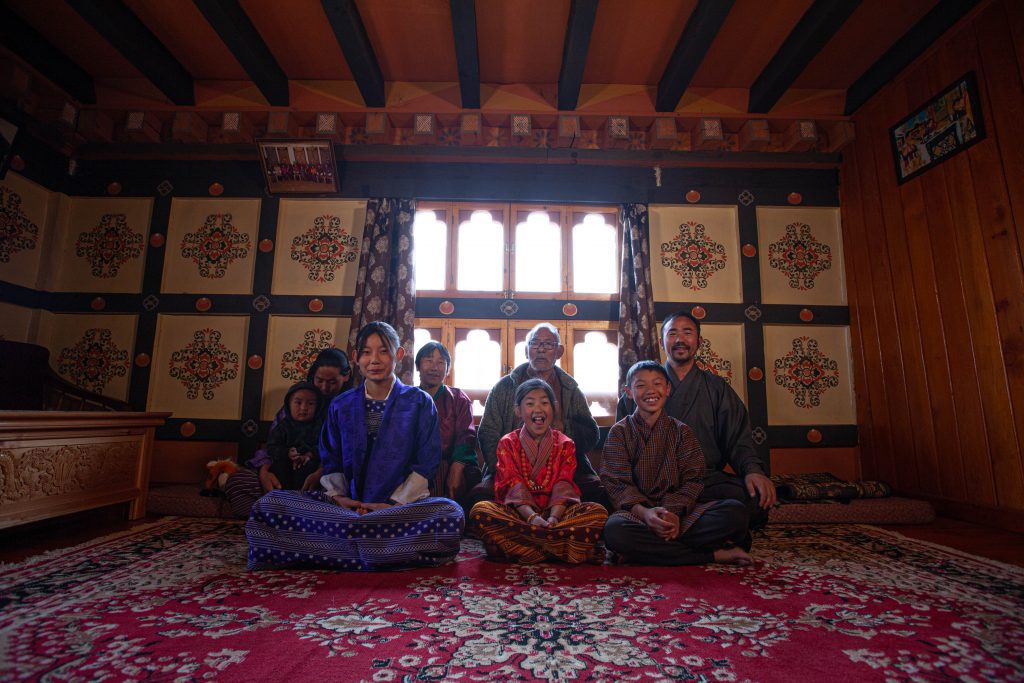
If you want to try all these unique dishes, book a stay at Choden Homestay in Haa. Call 17718795.